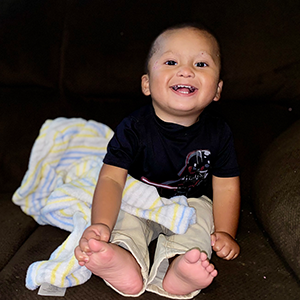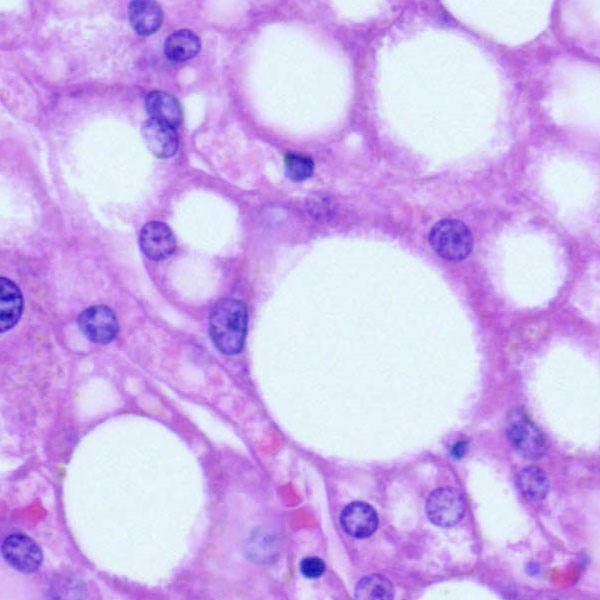-
A young father’s regenerative bridge to transplant
Mayo Clinic is pioneering and refining regenerative procedures that are a bridge to transplant. These procedures are providing new options for strengthening and rebuilding health while patients await the gift of life.
Organ transplantation is one of the most serious and complex surgeries, but it also can dramatically restore a patient's health and quality of life. Mayo Clinic von Liebig Center for Transplantation and Clinical Regeneration in tandem with the Mayo Clinic Van Cleve Cardiac Regenerative Medicine Program are at the forefront of advancing leading-edge regenerative interventions that improve the success of organ transplantation.

"One regenerative approach we are using is an ambulatory approach to positioning the intraaortic balloon pump that, together with medication, can help patients rehabilitate and get stronger while awaiting transplant," says Atta Behfar, M.D., Ph.D., a heart transplant cardiologist and Director of the Mayo Clinic Van Cleve Cardiac Regenerative Medicine Program. "We discovered a new way of implanting this device, so it is easier on patients and is tolerated for longer periods of time. Sometimes a longer time frame is needed to trigger the body's ability to heal enough to endure organ transplantation." Dr. Behfar is also deputy director of translation for the Center for Regenerative Medicine.
Steven's story
Steven Graham, 34, of Ames, Iowa, was born with his heart in backward — a condition known as transposition of the great arteries. He had surgery as a baby to correct this congenital heart disease and beat his physicians' predictions that he likely would not survive past age 30.
But after a series of pacemakers over the years, his heart was giving out, and he needed a transplant. Complicating matters, Steven's declining cardiac muscle was creating too much back pressure and damaging his lungs.
His physicians said he would need a heart and lung transplant. Then came the tough news that they no longer could help him.
That's when Steven came to Mayo Clinic.

"The pressures in his lungs were high because his heart didn't work properly. We worried if that were not reversed, it would cause a new heart to go into failure," says Sudhir Kushwaha, M.D., a Mayo Clinic heart transplant cardiologist. "We thought we might be able to get those lung pressures down so he would only need a single organ transplant and avoid a much more complex heart and lung transplant. Without a heart transplant, his prognosis would have been in months."
A regenerative approach
Mayo Clinic's transplant team took a regenerative approach to Steven's care when standard oral and IV medications alone didn't reduce the lung pressures.
They implanted an intraaortic balloon pump through the axillary artery that passes through the upper chest in a procedure discovered and validated through Mayo Clinic research. This minimally invasive approach through the skin ― what is known as a percutaneous approach ― allows insertion of the balloon pump through the arm and down the aorta under local anesthesia. It's a method developed in the Van Cleve Cardiac Regenerative Medicine Program. This discovery allows patients like Steven the flexibility to get up, walk around and even exercise with the pump working in the body.
The traditional way of placing the balloon pump is through an artery in the leg, after which patients must remain bedbound the entire time.
"We definitely would not want someone waiting for a transplant to lie in bed for many weeks. If you go into that surgery as an unfit person or someone who has been bedbound, the amount of time rehabilitating in the ICU after transplant can be quite long," says Dr. Behfar.
The advantage of placing the balloon pump in the arm is that patients can benefit from having it in place for weeks or months instead of just days. In Steven's case, it provided time for the pump to reverse the high pressures in his lungs, and for his to body to regenerate and get stronger in anticipation of transplant.
"Over the course of many weeks, the balloon pump and medications that were started caused the cells that were reacting abnormally in his lung arteries to behave more normally. As his lungs regenerated, the pressures started to come back down. As his lungs normalized, we knew that if we were to offer a heart transplant, the new heart could work normally," says Dr. Behfar
'I'm going to do it. It's going to be great'
Steven could not only walk with the balloon pump, but also he could work out in his hospital room. He seized the opportunity to build his strength for surgery with the ultimate goal of getting home to his family.

"I would ride a stationary bike 10 miles a day. I said: 'I'm going to do this. I'm going to get strong enough for a transplant and then go home. It's going to be great. (I told myself) I'm almost at the finish line. Keep going,'" says Steven.
His efforts paid off. After two months with the balloon pump and medication, his lung pressures declined and he qualified for a heart transplant. The time on the exercise bike strengthened his muscles, and he recovered so rapidly that he was discharged from the hospital two weeks after his transplant.
A new life
Steven, his wife, Randi Graham, and their toddler daughter, Ari, are enjoying a new chapter in their lives.
"I can do pretty much anything I want to do now. We walk almost every night. I work out on an elliptical," says Steven. "We went to two weddings recently, and we were able to dance as long as we wanted."

"Life is so different now," says Randi. "He can take our daughter for walks to the park. He can wrestle with her on the bed. It's just beautiful, and we couldn't be more grateful."
Always the fighter, Steven looks forward to a long life and an active future that may one day include coaching his daughter's youth sports teams.
"You don't survive a near-death experience as a baby only to die at age 30," says Steven. "I want to be around. I want to be here when Ari turns 30 and see what she has become."
The transplant team credits the regenerative intervention and Steven's determination for his rapid recovery.
###
Watch an animation of how the balloon pump works.
Related Articles







